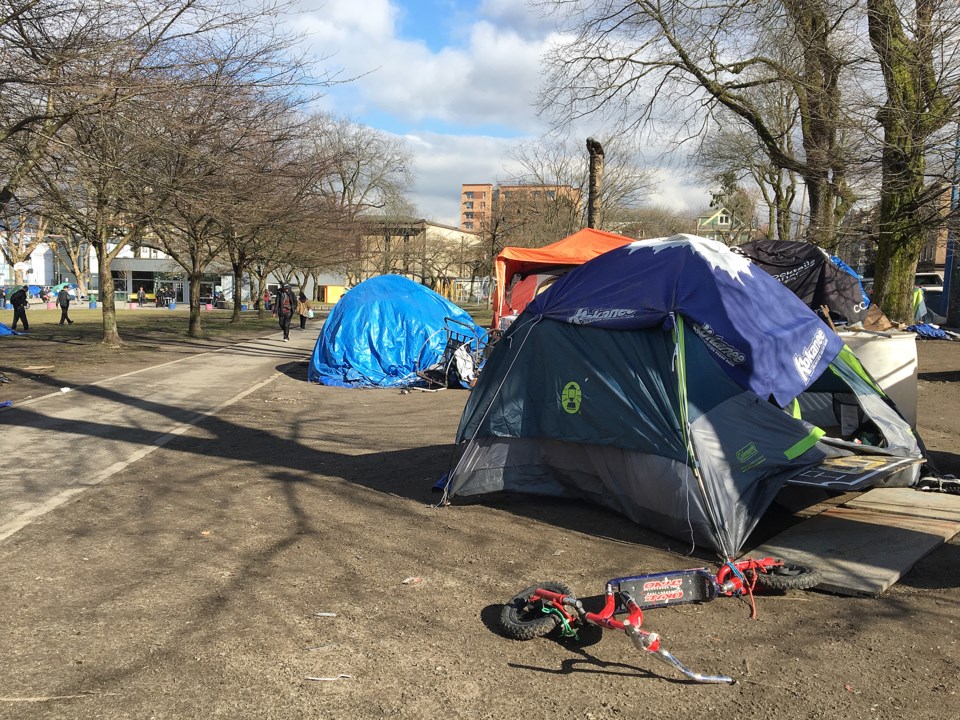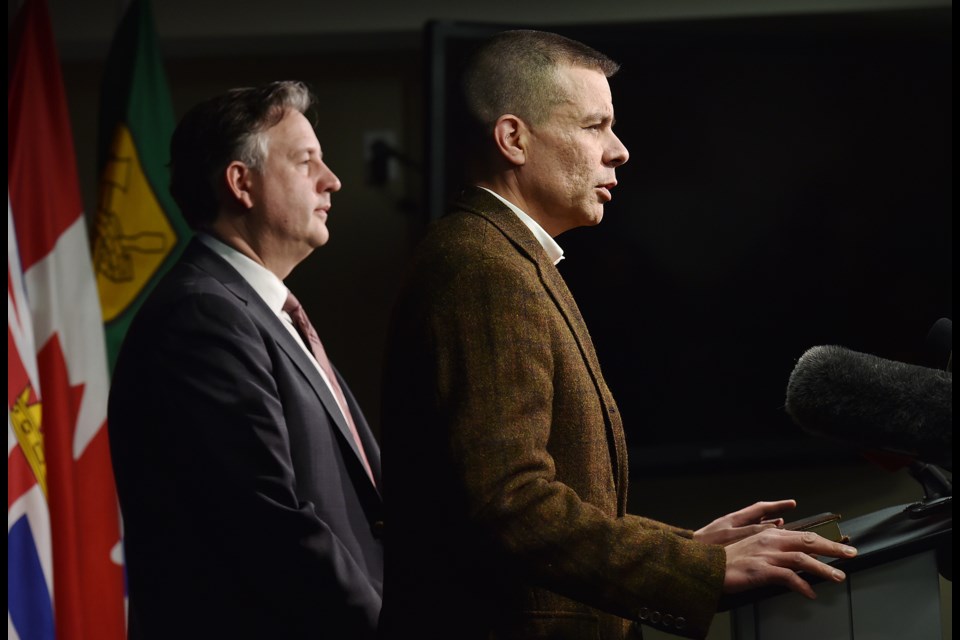The percentage of Indigenous people living in 556 of the city’s temporary modular housing buildings is now at 44 per cent, according to city officials who continue to work to find homes for a population overrepresented in annual homeless counts.
That percentage could increase once 50 more people are tenanted in all 606 units in the 10 modular housing sites across the city, said Abi Bond, the city’s managing director of homelessness services and affordable housing programs.
“We’re trying to make an impact around that number [of Indigenous homeless people],” said Bond, who participated this week in the city’s homeless count, which began Tuesday and will conclude Wednesday.
Year over year, the city’s annual homeless counts have shown Indigenous people are overrepresented in the number of people living on the street and in shelters. Last year’s count showed 40 per cent of the homeless people surveyed identified as Indigenous.
That’s 40 per cent in a city where census data from 2016 indicated Indigenous people accounted for only 2.2 per cent of Vancouver’s population. The total number of homeless people counted in Vancouver last year was 2,181.
However, not all those counted agreed to be interviewed by volunteers. So the number of Indigenous homeless people is believed to be higher, particularly when city officials also acknowledge they don’t find all people without a home during the count.

The 606 modular housing units were built to house homeless people. The city says 80 per cent of tenants moved in from the street and shelters. Others came from precarious housing situations, according to Bond.
David Wells, chairperson of the Indigenous Homelessness Steering Committee, said he welcomed the news that 44 per cent of Indigenous people are tenants in the city’s modular housing buildings.
But, Wells said, he believes the percentage—which equates to 244 people—should be higher when considering the chronic problem of Indigenous homelessness.
“It’s a good start,” said Wells, who participated in the city’s count Wednesday in Stanley Park. “We obviously want to see more because it is such an incredibly significant thing for the Indigenous community.”
Wells said many Indigenous homeless people—as previous city reports have shown—are unsheltered and “not accessing some of the support services that put them in a place to be ready for housing.”
The high cost of housing in Metro Vancouver, along with discrimination experienced by potential Indigenous tenants of rental housing, are drivers of homelessness, he said.
Colonization, trauma, racism, poverty, abuse, mental health issues and a disconnection from family and culture have been identified by the city and health authorities as other factors to why the region continues to see an overrepresentation of Indigenous homeless people.
Mayor Kennedy Stewart, who attended a news conference Wednesday at city hall with Wells, didn’t directly answer a question from the Courier when asked what percentage of tenants in the 606 modular housing units should be Indigenous.
“I think the best thing that could happen is that the 2,100 number [of homeless people counted in 2018] was reduced to zero—that we had everybody housed, despite whatever distribution of the population,” said Stewart, who did not participate in the homeless count. “But I am encouraged that the distribution of the current units is fair—that it is based on this great need with our Indigenous neighbours.”
The mayor pointed to non-profit operators of the modular housing buildings such as Lu’ma Native Housing Society as an indication of the recognized need to address homelessness in the Indigenous community. The B.C. government chose Lu’ma to operate the 98-unit complex at 5077 and 5095 Heather Street.
The two buildings provide homes for Indigenous people. The PHS Community Services Society, which manages four other buildings, has 56 of 195 tenants who are Indigenous.
During last year’s count, only the 78-unit modular housing complex in Marpole was open. With 556 people now living at 10 sites, Stewart said he was hopeful the addition of the housing would help decrease the homeless population in Vancouver.
“But rather than wringing my hands over counts, I’d rather be on the phone with ministers trying to get more money [for housing],” he said, noting he spoke to Jean-Yves Duclos, the federal minister responsible for housing, by telephone prior to the news conference.
Stewart said Duclos initiated the conversation, which he described as “productive.”
“We’re hoping that the federal government returns with extra funding, and I’m very happy that the minister reached out today,” he said, noting the federal government provided $1.5 million to help build the city’s first modular housing building at Main and Terminal. “I feel like even though the counts are difficult, and they remind us all where we have to focus, that we have a willing federal partner that perhaps will chip in more money is a good sign.”
City council is expected to receive a report on the homeless count in May.
@Howellings



